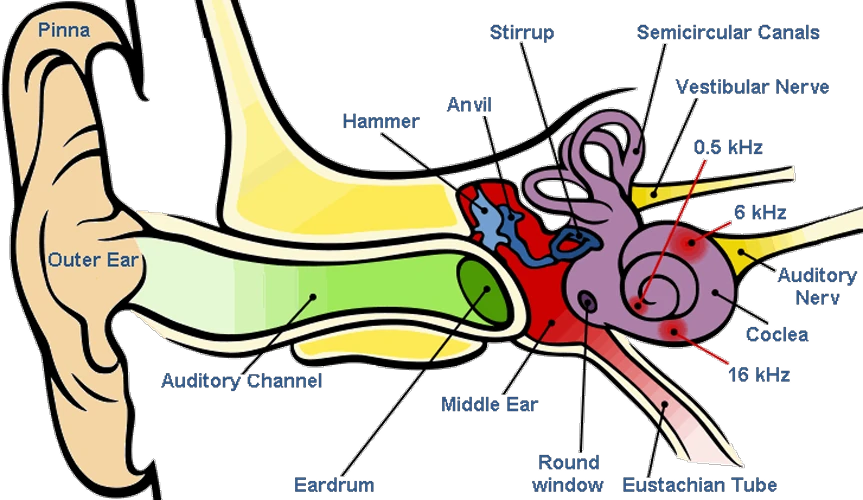How do we hear?
In this blog, I will talk about and explore how our hearing system
works. The human ear is an extremely delicate and
complicated natural device, so much that it is truly fascinating to know of how
it works and almost impossible to believe so much actually happens in such a
small place.
The anatomy
of the human ear exists in three major parts extensively
known as - the outer, middle, and inner ear. The part that we can see, along
with the ear canal, is known as the outer ear. The eardrum can be found towards
the end of the ear canal which separates the outer from what is known as the middle ear. It is small
cavity that consists of three tiny bones known as the ‘auditory ossicles’. The
auditory ossicles is made up of the malleus (aka hammer), incus (aka anvil),
and stapes (aka stirrup). Then we have the inner ear which in reality is two
different components: the cochlea, which handles the hearing aspect, and the
vestibular system, which helps controls our balance. The cochlea is a tiny chamber
which is almost snail-shaped which is attached to the auditory nerve which
leads to the brain, where as the vestibular system is made up of many different
tubes and sacs. The inner ear is also often known as the ‘labyrinth’.
The
outer ear, also called as the pinna enhances our hearing. The is the soft
cartilage structure which an on a day to day basis would call our ‘ear’ and the
part which someone decided was a good place to poke a hole and hang jewelry and
everyone followed?! What the pinna actually does for us is that it helps our brain
identify the direction from where the sound is coming from.

“What
happens to us on the inside when we hear a noise?” you may ask. First, a series of vibrations known as ‘sound waves’ passes
through all parts of our ear. When the vibration strikes the eardrum, it
vibrates with response and sends the vibrations onwards to the auditory
ossicles. The three small bones there then amplify the sound and moves them
along to the cochlea, which is lined with sensory receptors and is filled with
fluids. The vibrations then cause the fluid movement, which then in turn moves
our sensory receptors. The sensory receptors then send an electric signal to
our brains, where it is translated into a sound that we can understand.
It might seem like a complicated and long process, but as we know, this
all happens so instantly as soon as sound waves are created that we don’t even
realize it’s happening!
Have you at any point of time heard a ring in your ear and you
just think to yourself “what is that??” What is actually happening is that one of your numerous hair cells
in your ear has just vanished. The tragic part being, these cells are key in
our hearing and can never come back.So next time you hear a ring in your ear
you will realize that a hair cell simply died.
Another aspect you might be wondering about is how hearing
aids fit into all of this. The simple answer is that hearing aids actually amplify sounds and direct them
into the ear. While there are many different types, almost all hearing aids have the same main principle and
components which are –
·
a microphone
·
an amplifier, and
·
a receiver/speaker
which puts this into the
category of audio

Refrences
How Hearing Works: Your Guide to the Human ear. (audicus). Retrieved March 15, 2016,
from https://www.audicus.com/how-hearing-works-your-guide-to-the-human-ear/
The Auditory System. (n.d.). Retrieved October 15, 2017,
from https://explorable.com/auditory-system
[The human ear - a system of human hearing mechanism.]
[Photograph]. (n.d.). Retrieved from https://informatics.buzdo.com/specific/theater-1.htm
[Working of a hearing aid device] [Photograph]. (Joe
O'Donnell). Retrieved from
http://www.ssc.education.ed.ac.uk/courses/deaf/aud2ad.html
Comments
Post a Comment